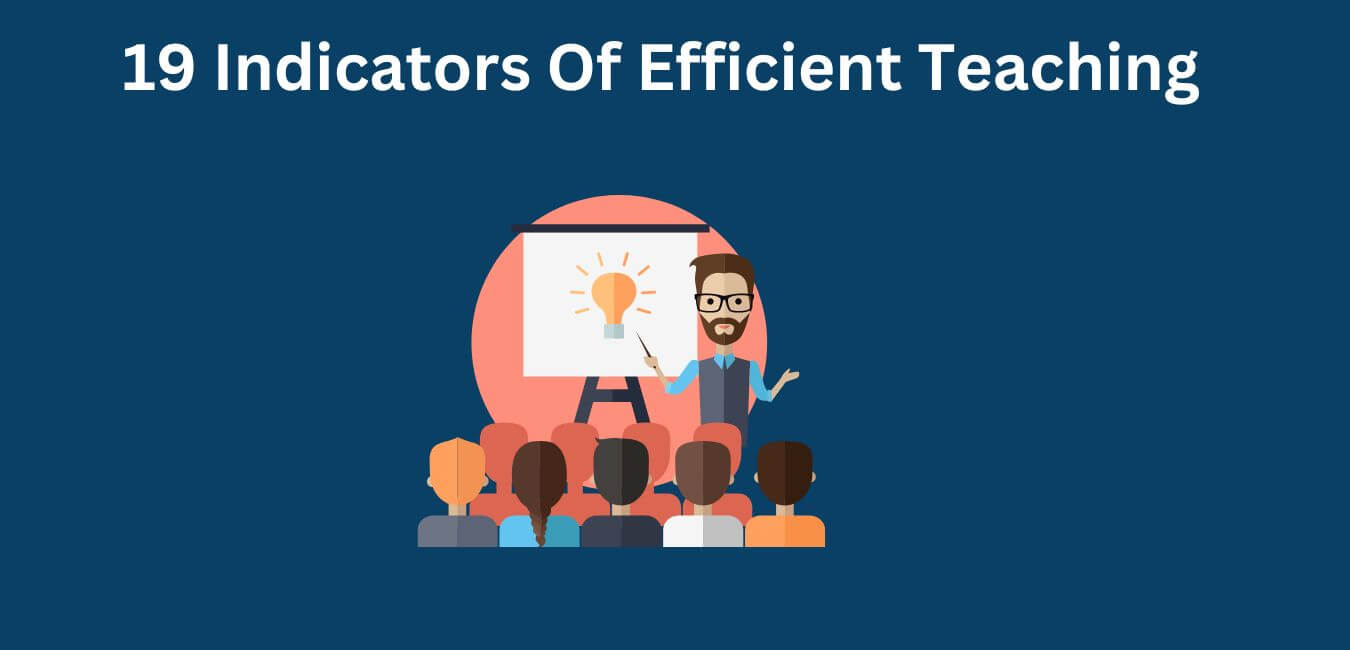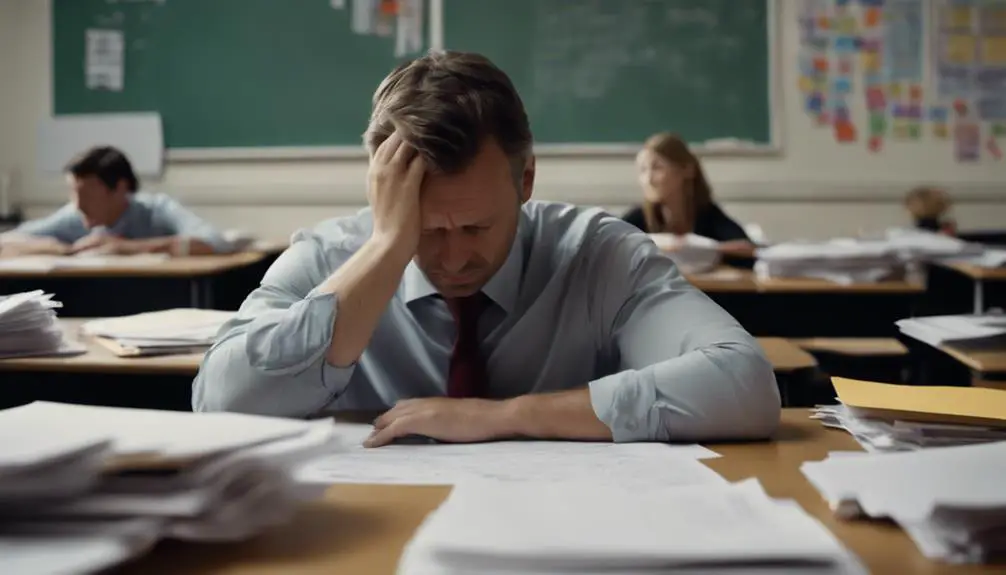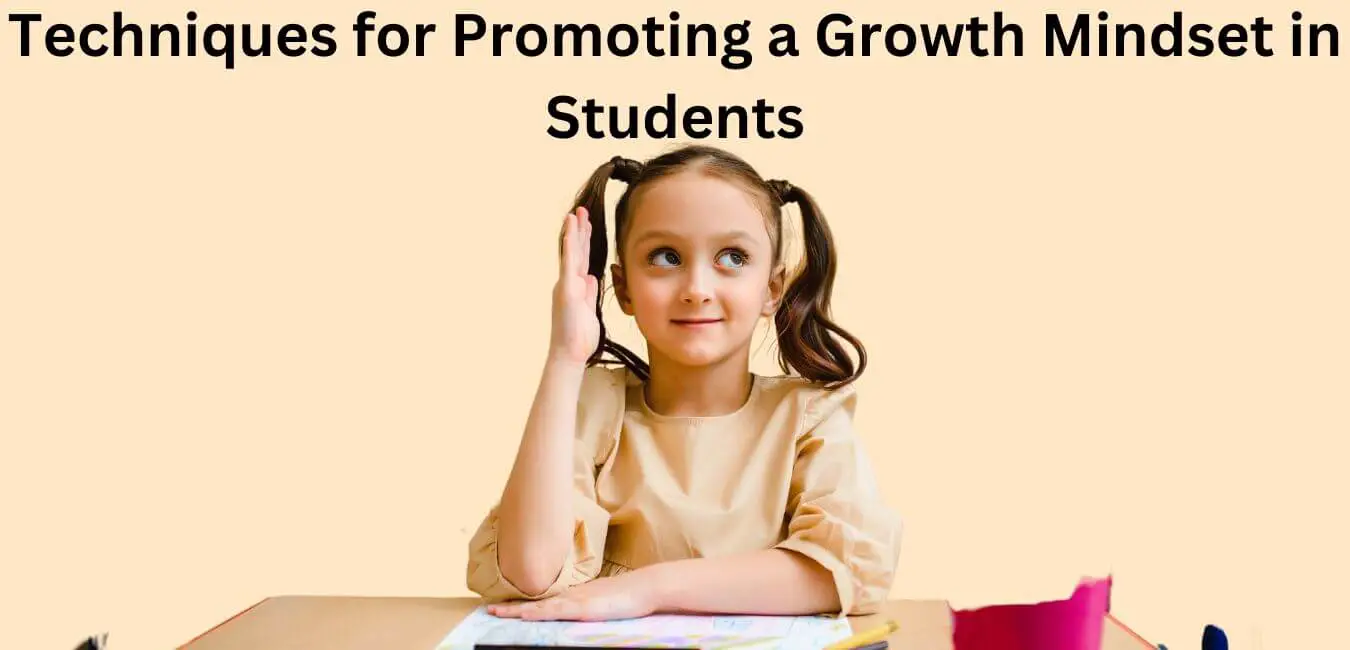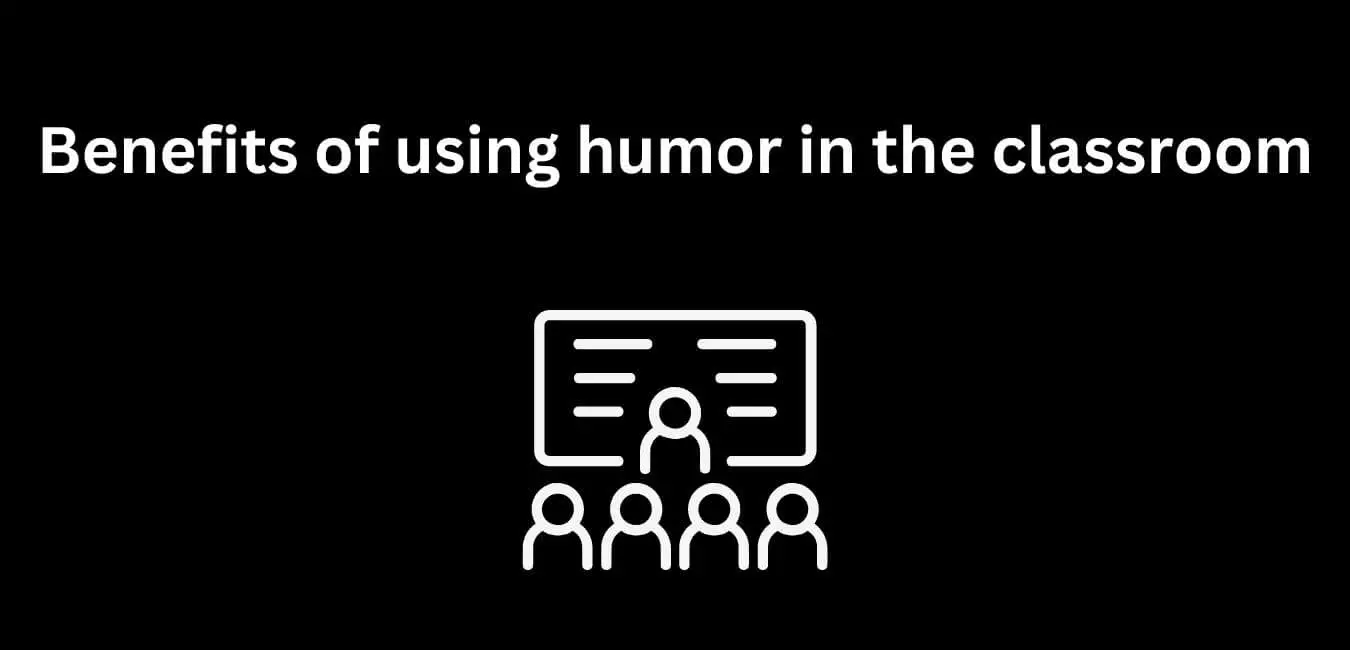Educators play a pivotal role in shaping the future, molding young minds with precision and dedication.
But what truly characterizes effective teaching? How do we ensure that our influence in the classroom lingers long after the school day ends?
Let’s discuss the 19 markers that act as a guide for impactful teaching, leading us toward the creation of dynamic learning environments where students flourish and knowledge thrives.
19 Indicators Of Efficient Teaching
When exploring the indicators of efficient teaching, let’s delve into the key elements that contribute to successful educational practices.
Clear learning objectives play a crucial role in guiding instruction while engaging teaching methods capture students’ attention effectively.
Active student participation, along with effective classroom management and timely assessments, complete the essential components of successful teaching practices.
It’s important to picture yourself in front of a mirror and reflect on how these elements can enhance the learning experience for both educators and students.
Moreover, incorporating these strategies can lead to a more productive and engaging classroom environment.
Clear Learning Objectives
When setting clear learning objectives, educators pave the way for effective teaching practices. Students benefit from knowing precisely what’s expected of them, which enhances their engagement in the learning process. Aligning assessments with these objectives ensures accurate measurement of learning outcomes.
Teachers can enhance instructional clarity by establishing specific goals that guide students toward success. By delving into clear learning objectives, educators provide a roadmap for both themselves and their students, creating a structured and purposeful learning environment.
This clarity not only helps students understand requirements but also assists teachers in delivering focused instruction that directly addresses the intended outcomes.
Engaging Instructional Methods
Implementing dynamic and interactive teaching techniques can significantly enhance student engagement and improve learning outcomes. To achieve this, consider integrating the following strategies:
- Interactive activities: Encourage active participation by engaging students in hands-on exercises that require them to apply concepts in real-time.
- Engaging discussions: Foster meaningful dialogues that enable students to share their perspectives and learn from their peers’ insights.
- Collaborative projects: Promote teamwork and problem-solving skills by assigning collaborative tasks that necessitate students to work together towards a shared objective.
These approaches not only increase student interest but also facilitate a deeper comprehension of the subject matter. By incorporating experiential learning opportunities and innovative assessments, educators can create a stimulating and enriching educational environment for their students.
Active Student Participation
Encouraging active student participation is crucial for effective teaching. When students engage in interactive discussions, group activities, peer feedback sessions, hands-on learning experiences, and collaborative projects, they enhance their learning journey.
Picture yourself in front of a mirror, envisioning a classroom where students are actively involved in every aspect of their education. By delving into interactive discussions, students share diverse ideas, while group activities foster teamwork skills. Peer feedback sessions help improve communication abilities, and hands-on learning solidifies understanding of concepts. Collaborative projects further enhance critical thinking skills.
Through these methods, students not only deepen their knowledge but also develop a sense of community and mutual respect among peers. This active participation leads to a more fulfilling and effective learning experience, where students feel more invested in their education and growth.
Effective Classroom Management
Creating an efficient and well-organized classroom environment is crucial for effective teaching. When it comes to managing a classroom successfully, several key elements play a vital role:
- Behavior Management: Establishing clear expectations and implementing positive reinforcement techniques can help cultivate a productive learning atmosphere.
- Classroom Discipline: Enforcing rules consistently and applying fair consequences encourages respect and accountability among students.
- Instructional Strategies: Employing a variety of teaching approaches tailored to individual student needs enhances understanding and engagement.
Timely Assessment Practices
Effective and timely assessment practices are essential for gauging student progress and improving instructional strategies in the classroom. Precision in assessment ensures that feedback is tailored to each student’s performance level. Providing regular feedback helps keep students engaged and motivated, allowing for interventions when necessary. Consistent grading practices promote fairness and reliability in evaluating student work. Tracking progress through frequent assessments enables teachers to monitor individual and class development, making adjustments as needed. The effectiveness of evaluation lies in utilizing assessment data to enhance teaching methods and support student growth.
When assessing students, it’s crucial to align feedback with their performance levels accurately. Regular feedback is necessary to guide student learning effectively. Maintaining fairness and reliability in evaluation practices through consistent grading is paramount. Tracking student development and adjusting instruction accordingly is vital for overall progress. Using assessment data to improve teaching practices and support student growth is key to effective evaluation.
Supportive Learning Environment
Creating a supportive learning environment is crucial for effective teaching methods. To achieve this, educators should focus on the following key elements:
- Collaborative projects: Encouraging students to work together on assignments fosters teamwork and communication skills.
- Supportive atmosphere: Establishing a safe and inclusive space where students feel comfortable sharing their thoughts and ideas is essential for optimal learning.
- Interactive discussions: Leading conversations that promote active participation and the exchange of perspectives enhances the overall learning experience.
Differentiated Instruction Strategies
Imagine standing in front of a mirror, tailoring teaching plans to suit the diverse needs of students in your classroom. By delving into personalized instruction, you can create individualized lessons that cater to various learning styles and preferences.
Through flexible grouping, you can form diverse teams where students collaborate and learn from one another. Engaging students through multi-sensory approaches, including visual, auditory, and kinesthetic activities, can enhance their learning experiences.
Providing choices in assignments and projects empowers students to take control of their learning journey. Scaffolded support helps students gradually build on their existing knowledge and skills, guiding them toward mastery.
These differentiated instruction strategies enable you to effectively address the unique needs of all learners in your classroom.
Encouraging Student Collaboration
When promoting a culture of teamwork and shared learning experiences, students can actively collaborate in the classroom, enhancing their understanding and engagement.
Effective strategies to encourage student collaboration include:
- Utilizing group projects to foster teamwork and allow students to learn from one another through shared experiences and diverse perspectives.
- Incorporating cooperative learning activities to develop teamwork skills.
- Encouraging students to work together towards common goals.
- Facilitating collaborative discussions to promote problem-solving abilities and critical thinking skills among students.
These approaches not only enhance academic performance but also cultivate essential communication skills, shared responsibility, and mutual support among students.
Adaptation to Student Needs
Imagine yourself standing in front of a mirror, tailoring your teaching strategies to meet the unique academic, emotional, and cognitive needs of each student. By exploring individualized instruction, delving into a student-centered approach, and unraveling flexible teaching methods, educators can ensure that every student receives the necessary support to excel.
Adapting teaching techniques to accommodate diverse learning styles and abilities within the classroom fosters a more inclusive and effective learning environment. Embracing personalized learning experiences allows educators to address the specific requirements of each student, leading to a more engaging and successful educational journey.
Meaningful Learning Experiences
In my role as an educator, creating meaningful learning experiences is crucial for effective teaching. To accomplish this, I emphasize:
- By doing hands-on activities: Engaging students in practical tasks that allow them to apply theoretical knowledge in a tangible way.
- By exploring real-world applications: Connecting lessons to real-life scenarios to demonstrate the relevance and importance of the concepts being taught.
- By delving into interactive discussions: Encouraging open dialogues where students actively participate, share ideas, and learn from each other’s perspectives.
These approaches not only enhance understanding but also make learning engaging and relevant.
Quality Learning Resources
When selecting learning resources, it’s crucial to choose materials that align with the curriculum and support the learning objectives. Evaluating these resources to ensure they effectively deliver content is essential for providing students with a top-notch educational experience. The materials should be engaging, relevant, and accessible to all learners, enhancing their understanding of the subject matter.
Instructional materials play a vital role in conveying information clearly and in a structured manner. Constantly assessing and improving the quality of resources used can optimize the teaching and learning process. Here are the key aspects of quality learning resources:
- Resource Selection: Ensuring alignment with the curriculum is crucial to maintaining relevance.
- Learning Materials: Engaging and accessible resources contribute to better comprehension.
- Resource Evaluation: Assessing effectiveness is key to ensuring quality and enhancing the learning experience.
Constructive Feedback Mechanisms
Feedback mechanisms play a crucial role in enhancing teaching practices. Constructive feedback is essential for fostering growth and improvement in teaching. Here are some key ways in which feedback mechanisms can enhance teaching effectiveness:
- Peer evaluations: By exploring feedback from colleagues, educators gain fresh perspectives and insights into their teaching methods, leading to potential improvements.
- Student surveys: By delving into feedback directly from students, teachers can better understand their needs and adapt their teaching approaches accordingly, creating a more student-centered learning environment.
- Classroom observations: By unraveling how students interact and engage in the classroom, teachers receive valuable feedback on the effectiveness of their teaching strategies and can make necessary adjustments to optimize student learning.
Integration of Technology
When exploring the integration of technology in teaching practices, one can uncover crucial signs of effectiveness that have the potential to revolutionize educational methods.
The integration of technology benefits educators by boosting engagement and interactivity in lessons through the utilization of digital classroom tools.
Online learning platforms provide flexibility in accessing educational materials and resources, catering to various learning styles. Effective implementation of EdTech strategies enables personalized learning experiences, facilitating students in grasping concepts more efficiently.
Through virtual teaching techniques, educators can connect with learners worldwide, transcending geographical boundaries.
Embracing technology in education not only enhances teaching efficiency but also equips students for the digital landscape they’ll encounter in the future. By harnessing these tools and techniques, educators can establish dynamic and impactful learning environments.
Culturally Responsive Teaching
Culturally responsive teaching practices help create a supportive and inclusive learning environment for students from diverse backgrounds. Implementing these strategies fosters student engagement and enriches the academic experience. Embracing inclusivity and valuing diverse perspectives not only enhances the educational journey but also prepares students for a globalized world.
Increasing awareness of equity and building global connections are essential components of multicultural education, promoting social justice in the classroom. Anti-bias teaching methods and community partnerships further contribute to establishing a supportive and inclusive learning space for all students. Through these approaches, educators ensure that every student feels valued, respected, and empowered to succeed.
Encouraging Critical Thinking
Encouraging critical thinking in the classroom is a vital part of effective teaching methods. Through activities like Socratic questioning, problem-solving tasks, analytical reasoning exercises, opportunities for creative thinking, and decision-making practices, educators can help students develop independent and critical thinking skills.
Socratic questioning encourages students to delve into their thoughts and cultivate a habit of questioning and reasoning. Problem-solving tasks push students to apply their knowledge to real-life situations, enhancing their analytical abilities. Exploring creative thinking opens up new possibilities for innovative solutions and diverse perspectives.
Decision-making exercises equip students with the necessary skills to make well-informed choices. By exploring these techniques, educators empower students to become active learners who can think critically and make informed judgments.
Positive Teacher-Student Relationships
As an educator, nurturing positive teacher-student relationships is a key aspect of effective teaching methods. Establishing trust is crucial as it fosters a secure and encouraging atmosphere for learning.
Communication abilities play a significant role in comprehending students’ requirements and delivering helpful guidance. Emotional intelligence aids in connecting with students on an empathetic level and tending to their emotional well-being.
Utilizing positive reinforcement can inspire students to actively participate in the learning process and enhance their self-assurance. Cultivating a bond with students fosters a feeling of belonging and promotes open dialogue.
These approaches not only enhance academic performance but also contribute to students’ overall development and well-being, fostering a harmonious and productive learning environment.
Continuous Professional Development
In my journey as an educator, continuous professional development is key to enhancing teaching efficiency. Engaging in peer mentoring, attending expert workshops, completing online courses, participating in interactive webinars, and receiving hands-on training are vital for my growth. These avenues offer valuable opportunities to refine skills, stay updated on best practices, and exchange knowledge with peers. Embracing continuous learning enables me to adapt to the evolving educational landscape and better serve my students.
Here are the various professional development opportunities I actively pursue:
Peer Mentoring: Collaborating with experienced colleagues to enhance teaching strategies.
Expert Workshops: Participating in specialized training sessions led by industry professionals.
Online Courses: Enrolling in virtual classes to expand knowledge and skills.
Interactive Webinars: Engaging in real-time online seminars to discuss innovative teaching methods.
Hands-on Training: Participating in practical sessions to apply new teaching techniques effectively.
Through these avenues, I continually strive to improve my teaching practices and positively impact the lives of those I serve.
Data-Driven Decision Making
Engaging with data-driven decision making greatly enhances teaching efficiency and effectiveness in the classroom. By exploring data analysis, instructional improvement becomes targeted and impactful.
Evidence-based decisions enable a more tailored approach to address student needs, leading to advanced learning outcomes. Delving into student progress over time allows for timely interventions and adjustments to teaching strategies, ensuring that no student is left behind.
Performance evaluation based on data helps identify areas of strength and areas needing improvement, guiding professional development efforts. Embracing data-driven practices not only advances teaching quality but also fosters a culture of continuous growth and reflection in education.
Reflective Teaching Practices
Reflective teaching practices offer a profound insight into student progress and instructional effectiveness. Unraveling my classroom methods through reflection involves self-assessment techniques, peer observations, lesson reflections, feedback loops, and fostering a growth mindset. Self-assessment helps in pinpointing areas for enhancement, while peer observations bring diverse perspectives. Delving into lesson reflections enables me to tailor teaching to student needs, with feedback loops ensuring constant improvement. Embracing a growth mindset fosters adaptability and growth alongside students, cultivating a dynamic learning environment.
Through self-assessment techniques, I identify areas for improvement, peer observations offer varied perspectives, lesson reflections help adjust teaching methods, and feedback loops ensure continuous enhancement. This reflective approach, coupled with a growth mindset, creates an effective learning environment that evolves with student needs and fosters continuous improvement.
Conclusion
Teaching efficiently requires a mix of enthusiasm, organization, and flexibility. To excel in this field, educators should prioritize student engagement, effective communication, and ongoing improvement.
Like a finely tuned machine, efficient teaching demands meticulous attention, adaptability, and a dedication to progress. So, envision yourself in front of a mirror, constantly refining your teaching methods and witnessing your students flourish in response.














